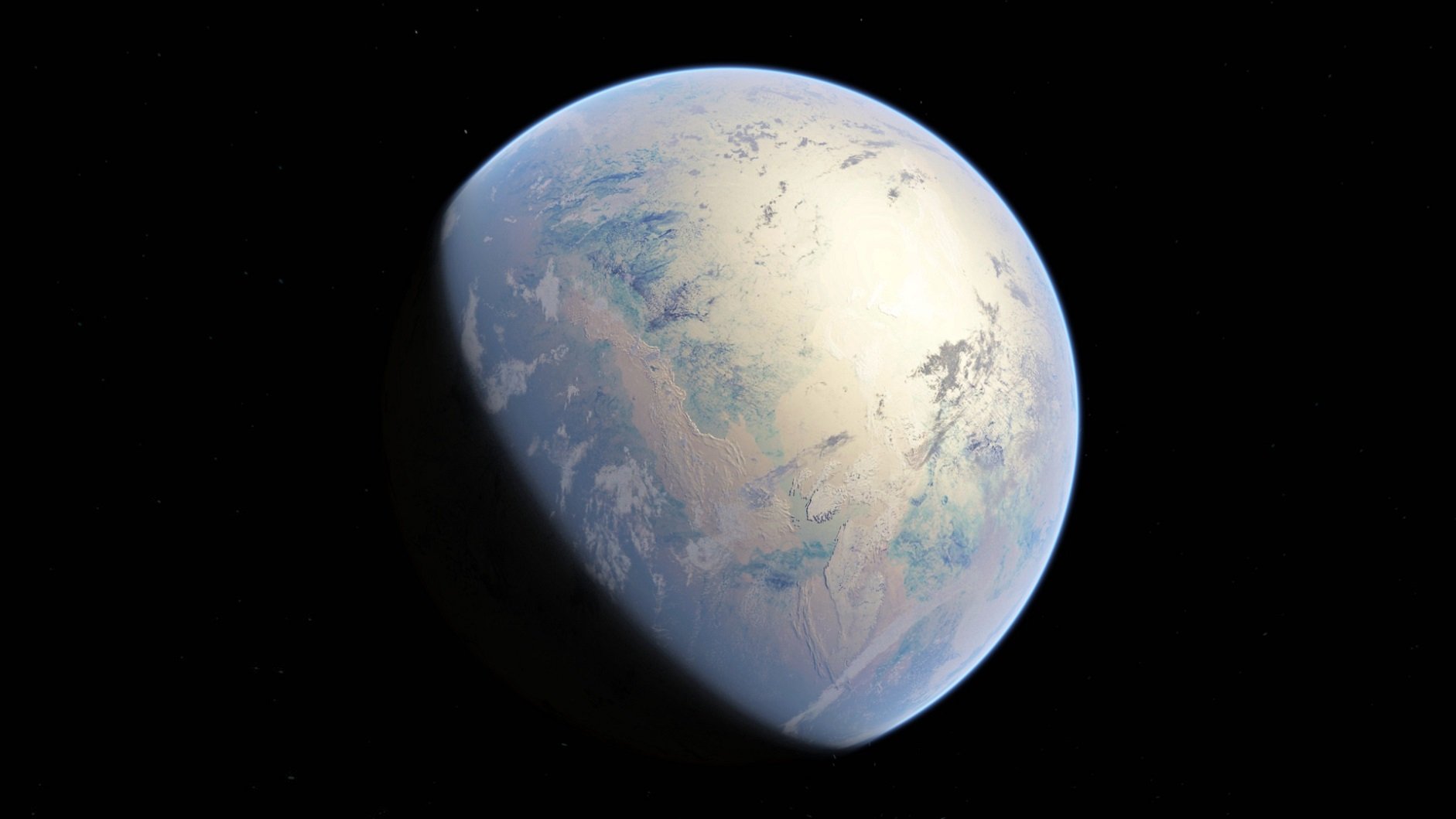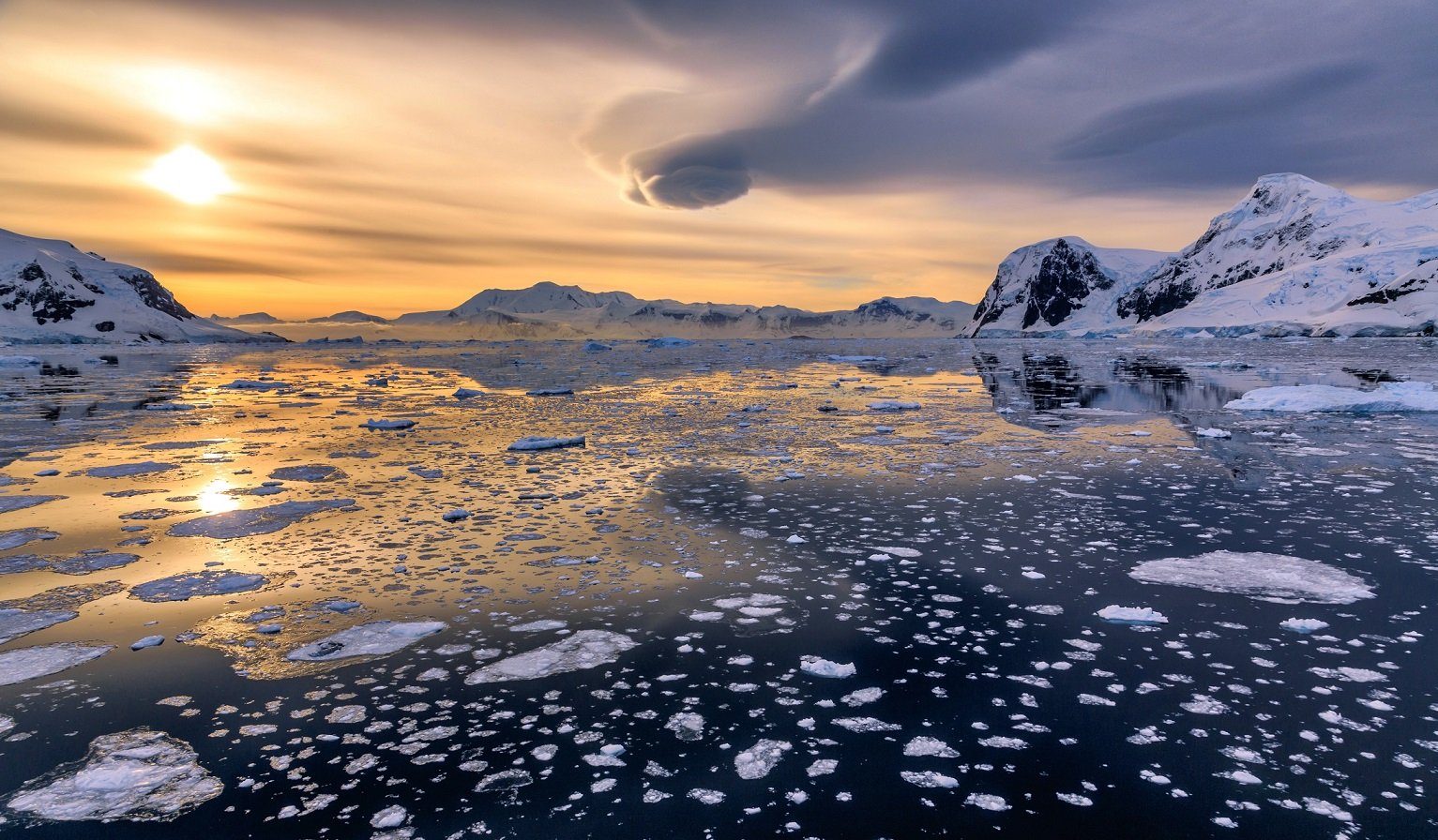Currently, the first animal life on Earth is thought to have emerged approximately 600 million years ago. This estimation is based on what we learned from the oldest fossils that have been discovered. However, molecular research implies that animal life emerged much earlier, in fact, over 200 million years earlier.
There is one problem however, Earth was going through one of the most extremely cold periods in its history during that time. So how did early life survive in these extraordinary conditions?
Snowball Earth - Image Credit: Oleg Kuznetsov via Wikimedia Commons / HDR tune by Universal-Sci (CC BY-SA 4.0)
The molecular research-based estimations regarding the earliest animal life on Earth some 850 million years ago. That means that these early creatures survived the most extreme global ice ages our planet has ever experienced. In fact, these global ice ages were so characteristic for the time that Earth in this era is often referred to as 'snowball earth.'
If animal life emerged before or during these fierce glacial times, it would have experienced circumstances that can be compared to those of today's marine ecosystems in Antarctica and the Arctic, which means that it would have needed a similar set of coping mechanisms.
Life on frozen moons
The hundreds of distinct animal and plant species found in current-day Antarctica have evolved over millions of years, driven by the ice sheets' expansion and contraction during cold and warm times.
The evolution of animal life on Earth may have followed a similar path. Although the polar areas appear to humans to be the most inhospitable places for life, they are the ideal location for research into the history and the possibility of life in the cosmos beyond our planet. Think of worlds such as the fascinating frozen moons of Jupiter and Saturn like Europa and Enceladus.
Further reading: Snowball Exoplanets Might Be Better for Life Than We Thought! (Universal-Sci)
In a study published in the peer-reviewed journal Global Change Biology, scientists describe how certain arctic species have evolved to live in and around the ice in extraordinary ways and how much they may tell us about the origins and persistence of life in the past or perhaps even on other worlds.
Extraordinary arctic and antarctic animals
Lead author, Dr. Huw Griffiths, explains that life in the Arctic (and the Antarctic) flourishes in circumstances that would kill most other animals, including humans.
He highlights some exciting examples, such as animals that live upside down on the bottom of ice sheets, sponges capable of surviving hundreds of kilometers under thick floating ice shelves, and entire populations of animals that live their whole life in complete darkness surviving food sources that don't need sunlight.
Image Credit: Vadim_N via Shutterstock / HDR tune by Universal-Sci
Some perspectives regarding snowball Earth
Currently, almost 20 million square kilometers of floating ice exists in our southern hemisphere. During winter in the northern hemisphere, floating sea ice reaches about 15 million square kilometers of coverage. This sounds like a lot, but during the 'snowball Earth' era, the entire planet was covered in an ice sheet (over 500 million square kilometers) about 1 kilometer thick that lasted for about 55 million years.
Forcing life to become more complex
Co-author and paleontologist, Dr. Emily Mitchell, stresses that there is an extremely large time gap between the emergence of the earliest animal life according to fossil records and molecular research.
This gap brings with it uncertainty about where and how animal life evolved. However, if animal life did evolve during or before Earth's extreme ice ages, they would have had to engage with severe environmental pressures. However, these circumstances could have helped to force life to become more complex to survive.
If you are interested in reading more about what the team learned about the survival strategies of animals in extremely cold circumstances, be sure to check out the paper listed below.
Sources and further reading:
Animal survival strategies in Neoproterozoic ice worlds (Global Change Biology)
The incredibly interesting (icy) moons of Jupiter (Universal-Sci)
Ice ‘lightning’ may have helped life survive Snowball Earth (Universal-Sci)
Snowball Exoplanets Might Be Better for Life Than We Thought! (Universal-Sci)
If you enjoy our selection of content consider subscribing to our newsletter (Universal-Sci Weekly)
FEATURED ARTICLES:









